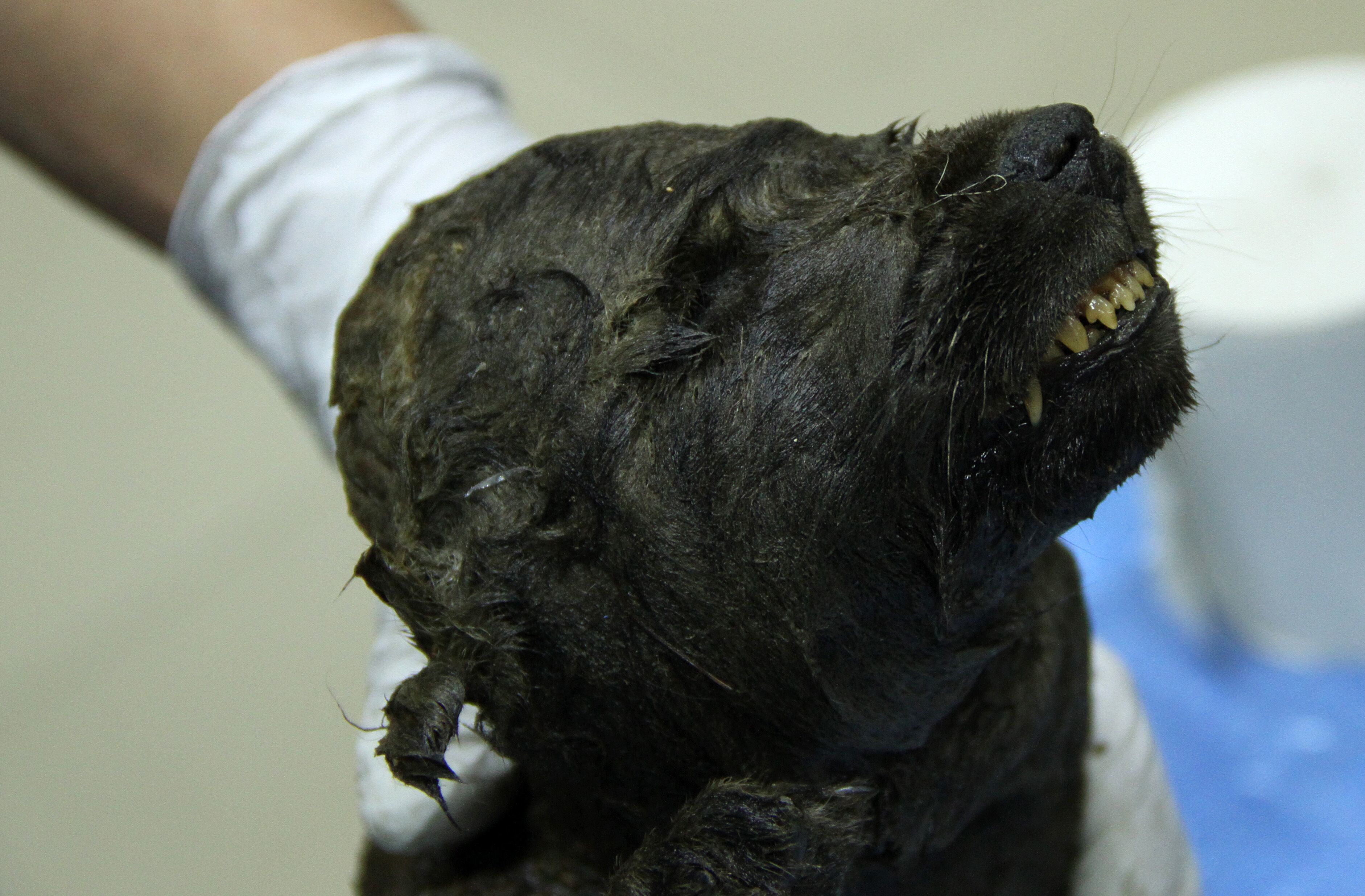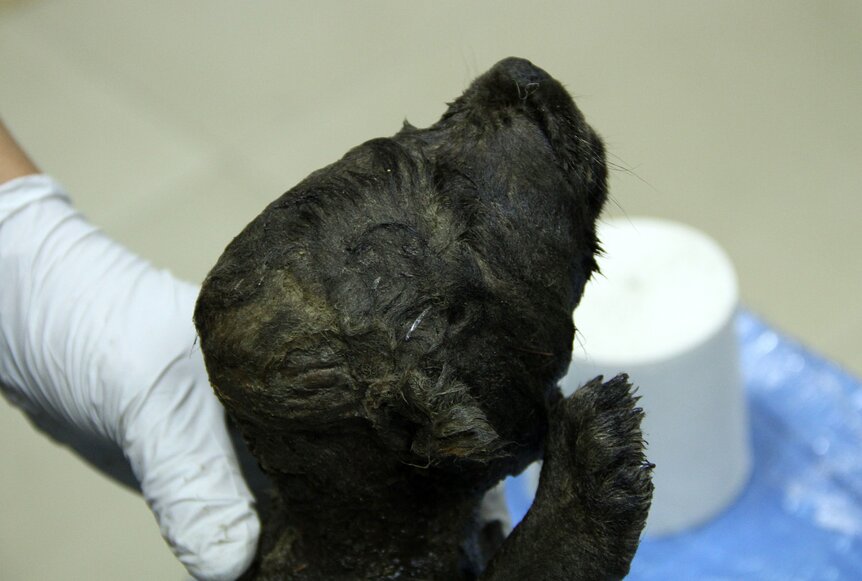Create a free profile to get unlimited access to exclusive videos, sweepstakes, and more!
We've ruled out baby werewolf, but is this 18,000-year-old mummified puppy a dog or a wolf?

Before your inner cryptozoologist gets excited, no, this is not a werewolf puppy (even though it could pass for one), but it could be something almost as weird.
The creature that emerged from the Siberian permafrost and has been baffling scientists seems to be neither dog nor wolf. Unearthed at the Belya Gora site in Yakutsk, eastern Siberia, Dogor — whose name is a Yakutian word for “friend” — has remarkably intact fur, teeth, and a nose. It almost makes him appear as if he just fell asleep.
After a sample from his rib bone underwent radiocarbon testing, paleogenetics determined Dogor to be an 18,000-year-old male. What wasn’t so clear was whose ancestor he’s supposed to be.
"It's normally relatively easy to tell the difference between [dogs and wolves]," David Stanton, a researcher at the Centre for Palaeogenetics in Stockholm, Sweden, recently explained to CNN. "We have a lot of data from it already, and with that amount of data, you'd expect to tell if it was one or the other. The fact that we can't might suggest that it's from a population that was ancestral to both — to dogs and wolves."
Dogor is thought to have lived during a time that could have been close to when dogs were domesticated, about 20,000-40,000 years ago. Man’s best friend is thought by some to have been domesticated from a single population of wolves. Other scientists believe dogs arose from gray wolves which were domesticated twice, once in Europe and once in Asia, during the Paelolithic era. This could mean Dogor is the oldest dog specimen ever found. However, this was also a period during which some interesting evolutionary changes started to take place in dogs and wolves.
Is this creature proof that an ancient species of wolf was slowly evolving into a dog, or vice versa?
The only thing that could demystify what species Dogor belongs to, and whether it’s even a species we know existed, is by sequencing his genome. That means the research team investigating this unusual case will have to unravel the order of nucleotides that make up his DNA. Whether the order of the adenine, cytosine, guanine, and thymine matches that in a modern dog or wolf should give them the answer — if Dogor is only one or the other. Things could get really confusing though if some sequences match up with dogs, while others echo wolves.
Dogs and wolves actually have 99% of their DNA in common, but that 1% difference is still the reason you'd rather not get within petting distance of the latter. Dogs were selectively bred for tameness (obviously) and other human-friendly traits. Domestication by selective breeding resulted in altered genetic signatures as generations of dogs became more and more removed from their fierce ancestors. There are several genes in particular associated with what scientists often refer to as "domestication syndrome", according to an article published in BMC Biology last year.
"The adrenal and pituitary systems, which are derived from neural crest cells, influence aggression and the 'fight or flight' behavior reactions, two responses which are lessened in domesticates," said University of Michigan geneticist Jeffrey M. Kidd and colleagues in the article.
In another 2018 study, the mitochondrial DNA (mDNA) sequences from the remains of ancient European dogs anywhere from 3,000 to 14,000 years old, which puts some of them close to Dogor's age, were examined. It was after this study that questions arose as to how many times dogs were domesticated from wolves. Scientists have begun to suspect it took more than just two tries to turn a wild beast into a faithful companion, and that may be where Dogor fits in. If he isn't a true hybrid, there is a chance that he could be the result of a domestication process that wasn't quite finished by the time he perished.
Whatever Dogor turns out to be, at least we know he’s not going to start howling at the full moon anytime soon.
(via CNN)















